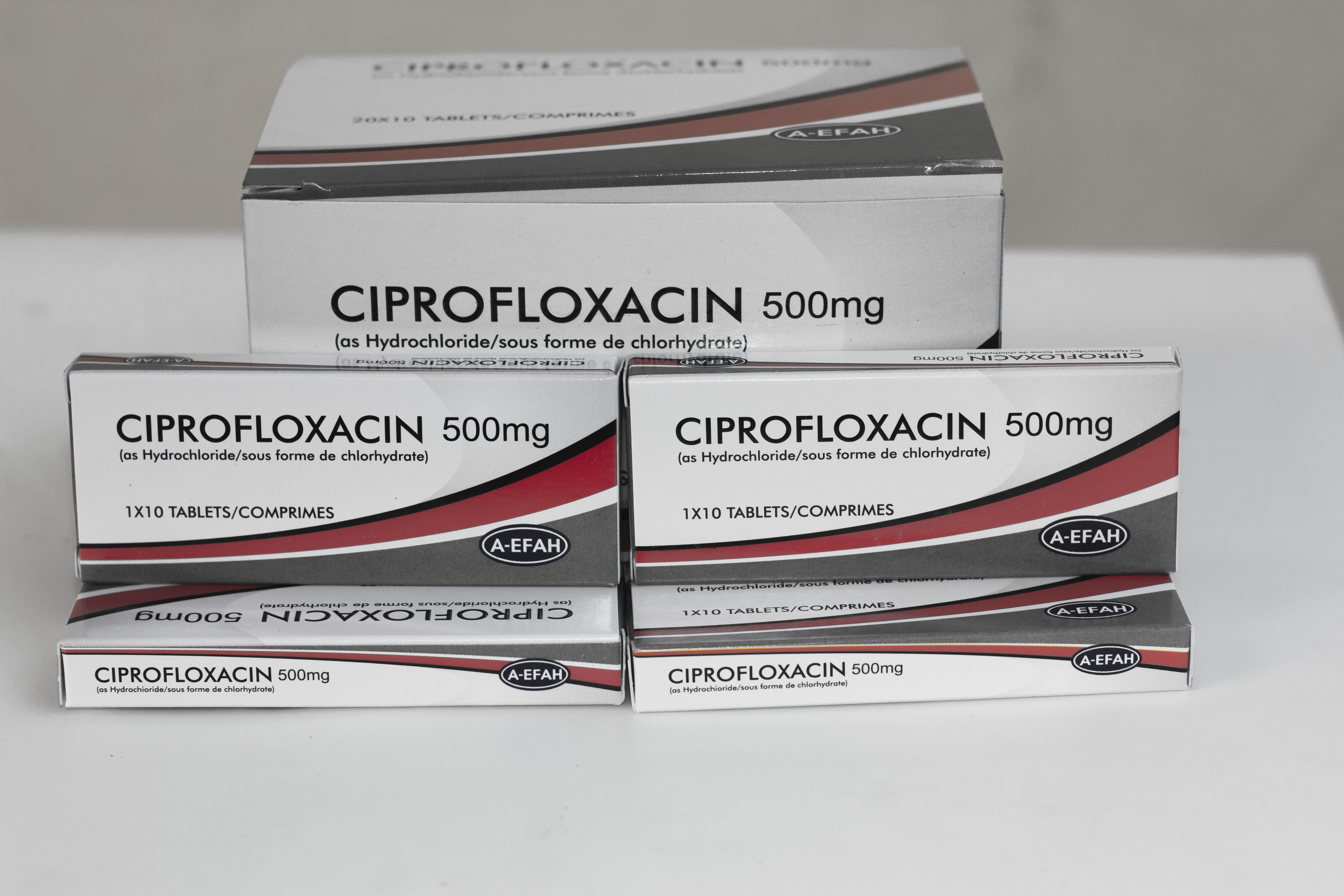
CIPROFLOXACIN Tablets
Composition
Each tablet contains Ciprofloxacin HCL, equivalent to 500 mg as the active ingredient.
It also contains maize starch, microcrystalline cellulose,
crospovidone, sodium starch glycolate, povidone, magnesium stearate, and colloidal
silicon dioxide as inactive ingredients.
Indications
Ciprofloxacin is a fluoroquinolone antibacterial highly
active against gram-negative bacteria such as Shigella, Campylobacter,
Neisseria, and Pseudomonas, as well as some gram-positive bacteria such as
streptococcus pneumonia and Enterococcus faecalis. It is active against
Chlamydia and some Mycobacteria.
Ciprofloxacin is also used in the treatment of a wide range
of infections of the gastrointestinal system (including typhoid fever,
parathyroid fever, traveler’s diarrhea, cholera, biliary tract infections)
respiratory tract infections (including pseudomonal infections and anthrax not
for pneumococcal pneumonia), infections of the urinary tract, gonorrhea, bone
and joint infections, ear infections (otitis external and otitis media),
meningococcal meningitis, and infections of the blood caused by sensitive
organisms.
Dosage and Administration
Ciprofloxacin tablets should be taken according to the dose
prescribed by a physician
-
Respiratory – tract infections, 500 to 750mg, 12
hourly
-
Urinary-tract infections 250 to 750mg 12 hourly
-
Acute uncomplicated cystitis 250 mg 12 hourly
for 3 days
-
Acute or chronic prostatitis 500mg 12 hourly for
28 days
-
Gonorrhea, 500mg as a single dose
-
Surgical prophylaxis 750mg 60 minutes before the procedure
-
Most other infections, 500mg 12 hourly
(increased to 750mg 12 hourly in severe or deep-seated infection)
-
Ciprofloxacin tablets are not generally
recommended for children and adolescents but if considered essential, doses of 5
to 15 mg per kg 12 hourly by mouth or 4 to 8 mg per kg 12 hourly intravenously have
been suggested
Pharmacodynamic Properties
Ciprofloxacin acts by inhibiting
the A subunit of DNA gyrase
(topoisomerase)
Pharmacokinetic Properties
Ciprofloxacin is rapidly and well
absorbed from the gastrointestinal tract. Oral bioavailability is approximately
70% and peak plasma concentration of about 2.5μg per ml is achieved 1 to 2
hours after a dose of about 500mg by mouth. Absorption may be delayed by the
presence of food but is not substantially affected overall. It is eliminated
principally by urinary excretion, but non-renal clearance may account for about
a third of elimination and includes hepatic metabolism, billary excretion, and
possibly transluminal secretion across the intestinal mucosa
Contraindications
Ciprofloxacin tablet is
contraindicated in patients who are hypersensitive to ciprofloxacin HCL or to
any of the excipients
Warnings and Precautions
-
Ciprofloxacin tablets should be used with
caution in patients with epilepsy or a history of Central Nervous System
Disorders
-
Tendon damage may occur rarely with
Ciprofloxacin and treatment should be discontinued if patients experience
tendon pain, inflammation, or rupture
-
Care is necessary for patients with impaired
liver or kidney function, Glucose-6-phosphate Dehydrogenase deficiency, or
Myasthenia Gravis
-
An adequate fluid intake should be maintained
during treatment with Ciprofloxacin
-
The ability to drive or operate machinery may be
impaired by Ciprofloxacin
Possible Side Effects
Gastrointestinal disturbances
including nausea, vomiting, diarrhea, abdominal pain, and dyspepsia are the
frequent adverse effects. Headache, dizziness, and restlessness are also common side effects. Some patients may have tremors, drowsiness, insomnia, nightmares,
visual disturbances, and more rarely, hallucinations or psychotic reactions.
Symptoms and Treatment of
Overdose
Seek immediate medical attention if a dose more than recommended is taken
Possible Interactions with Food
or Drugs
Ciprofloxacin may interact with
many analgesics, antacids, metal ions, anticoagulants, antiepileptics,
antimigraine, drugs, antineoplastics and immunosuppressants, antivirals,
anxiolytics, histamine H2-antagonists, probenecid, and xanthenes. Medicines
containing aluminum, magnesium, iron or zinc may reduce the absorption of
Ciprofloxacin. Taking NSAIDs with Ciprofloxacin may induce convulsions in
patients. Dairy products with high calcium content (milk, yogurt, etc.) might
also interfere with the absorption of some fluoroquinolones.
Pregnancy and Lactation
Ciprofloxacin and related
fluoroquinolones have, like nalidixic acid, been shown to cause degenerative
changes in weight-bearing joints of young animals. It has been suggested that
these compounds should not be used in children, adolescents, pregnant women, or
breast-feeding mothers
Presentation
Yellow round film-coated tablets
packed in PVC/Aluminum foil blister packs of 10 tablets by a blister
Storage Conditions
Ciprofloxacin Tablet 500 mg should
be stored below 30 degrees Celsius and away from moisture and light. Keep out of
reach of children.